Rajsamand (Rajasthan): The request to Meghraj Jain from his childhood government school in Rajasthan’s Shishoda Kalan village was a humble one: help us install four ceiling fans and water tanks. Instead, Dhakad gave them a stunning, state-of-the-art campus that looks more like a five-star hotel.
Meghraj, who studied at the Kankubai-Sohanlal Dhakad Government Senior Secondary School until Class 7, moved to Mumbai with his family in 1985. Decades later, he returned—as the head of Mangal Group—with a mission to change the face of Shishoda Kalan.
“I want to turn this village into an education hub, offering courses so unique that students from across the country come here,” he said. “I am planning to open a college and sports complex [as well].” Meghraj, the managing director of Mangal Credit and Fincorp Ltd, funded the school revamp project with his brother Ajit through their Mumbai-based Mangal Charitable Trust.
In May, the swanky school opened its brand new doors to 147 boys and 160 girls. The old school had once struggled with crumbling walls, falling cement, and no access to clean water. Today, it has undergone the makeover of a lifetime. The three-storey building has a 50,000 sq ft campus with 40 rooms, including an assembly hall, meeting and study rooms, science and computer labs, a library, volleyball and basketball courts, interlocking pathways, and lush green landscaping.
I want children from [Shishoda Kalan] village to become IPS officers and reach top positions — Meghraj Jain, MD, Mangal Credit and Fincorp Ltd
Computer labs, libraries, and a sports complex are all on the cards. While other schools in the village offer little beyond core academics, Kankubai-Sohanlal Dhakad School now offers subjects like agriculture, computer science, and beauty & wellness.
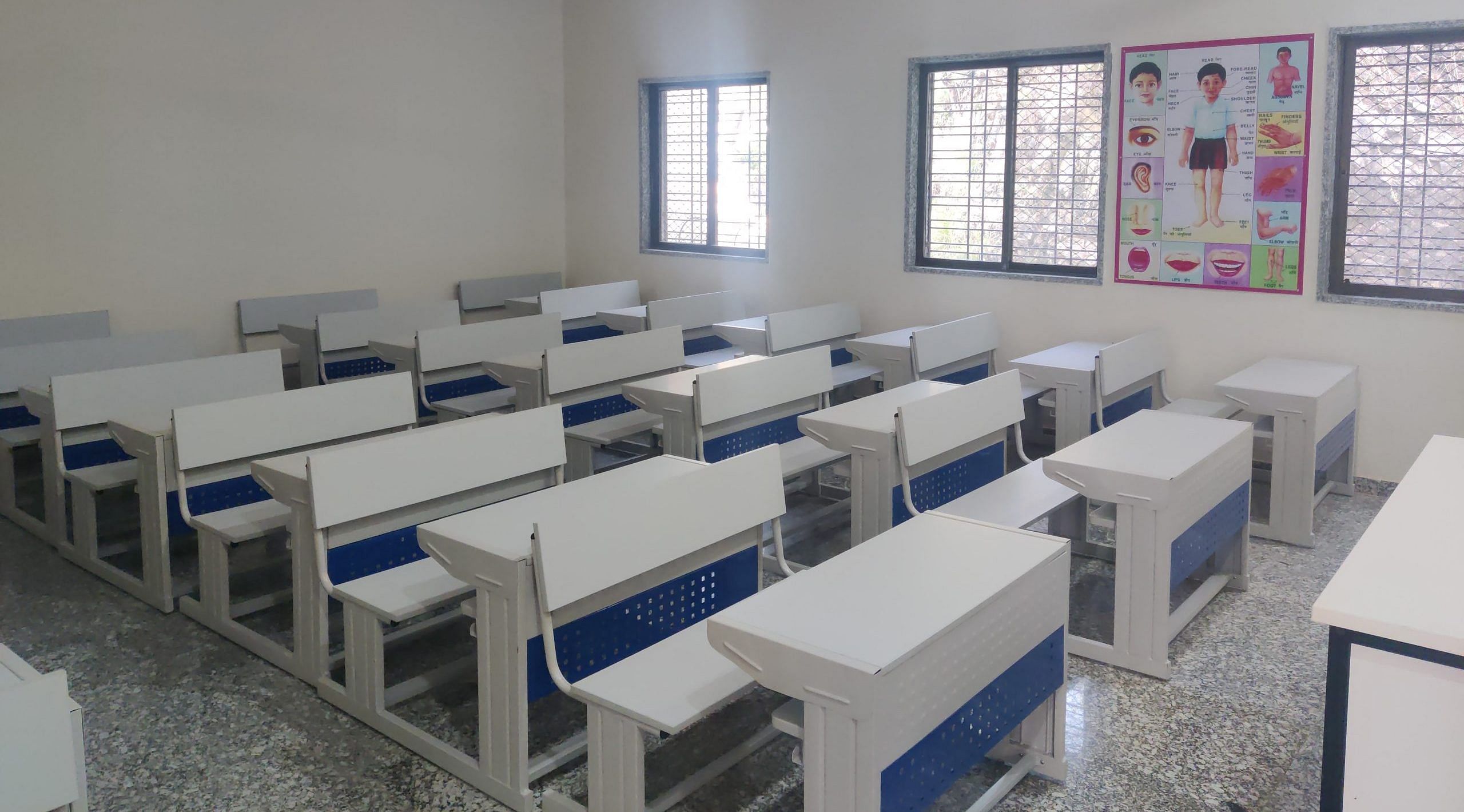
The new school has already sparked a competitive rush in nearby villages, with children and parents demanding similar schools. A change this significant hadn’t been seen since 1980, when another villager, Ramesh Dhakad—who later moved to Mumbai and founded a scrap business—built a hospital and donated it to the government.
Now, for the first time, the children of Shishoda Kalan are dreaming of going to college. And parents from neighbouring villages are clamouring for a seat.
“Both Ramesh and Meghraj are the true leaders of their village. They’ve always thought about the future and still do,” said Bhagwan Singh Chadana (34), the sarpanch of Shishoda Kalan.
Meghraj wants to go beyond just building a school.
“I want to serve society so wholeheartedly that in the next 10–15 years, I’m worthy of a Padma Shri,” he said. “I want children from this village to become IPS officers, reach top positions, and ensure every child gets the wings to chase their dreams, whatever they may be.”
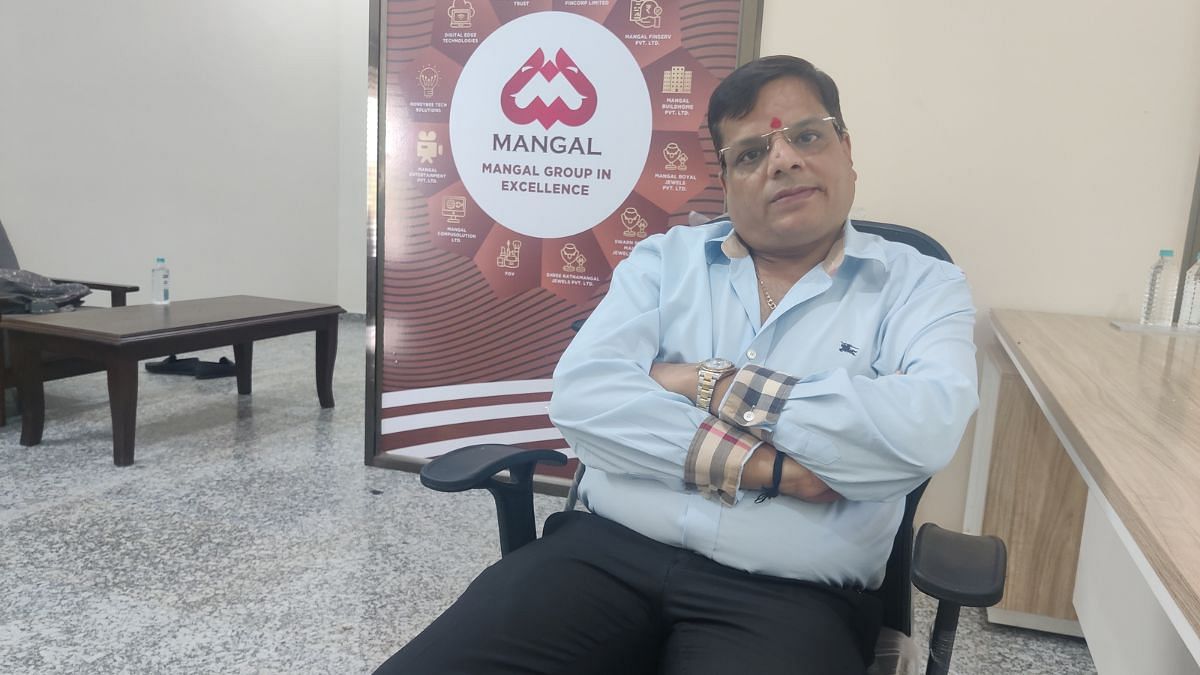
Meghraj also doesn’t agree that private schools automatically mean better education.
“I want to break the myth that good education only comes from private schools,” he said. “If government schools get proper infrastructure, there would be no need for private ones.”
Also read: Netarhat used to be an IAS launchpad. Now, it’s working on a comeback
A school is making girls dream big
When the newly appointed principal, Tarkeshvari Vyas, arrived at Shishoda Kalan, she drove past what she assumed was a luxury hotel — unaware it was the very government school she had been assigned to.
Now, the principal from Udaipur is as eager as the villagers to rewrite Shishoda’s future.
“The two-hour commute to work is worth it when you’re principal of a school that is shining nationwide,” Vyas said.
The school, which has classes from Standard 1 to 12, currently has approximately 300 students and 20 teachers, with a student-teacher ratio of 15:1. It charges a nominal government-set fee of Rs 200 a month and offers scholarships to high-performing students from low-income families.
It is a stark contrast from other government schools in Rajasthan, which face a shortage of teachers and lack basic facilities like drinking water, labs, and internet connectivity. According to Nootan Prakash Joshi, the additional chief block education officer of Kumbhalgarh, such initiatives will help Rajasthan improve its learning outcomes.
“When the school was inaugurated, its video went viral. Children from nearby villages began asking for similar schools, saying they too wanted to study in such an environment. The education department will do everything possible to ensure the school runs smoothly,” said Joshi, who was Rajsamand’s district education officer when the school was inaugurated in May.
The two-hour commute [from Udaipur] is worth it when you’re principal of a school that is shining nationwide — Principal Tarkeshvari Vyas
It’s early days yet, but the school has become the talk of the town. And for the first time, children, including girls, are talking about college, careers, and choices.
Isha Parman’s 37-year-old mother watched her 13-year-old daughter quietly as she carefully covered her new textbooks. She had once dreamed of becoming a teacher herself, but that dream faded when her parents arranged her marriage before she could complete 8th grade.
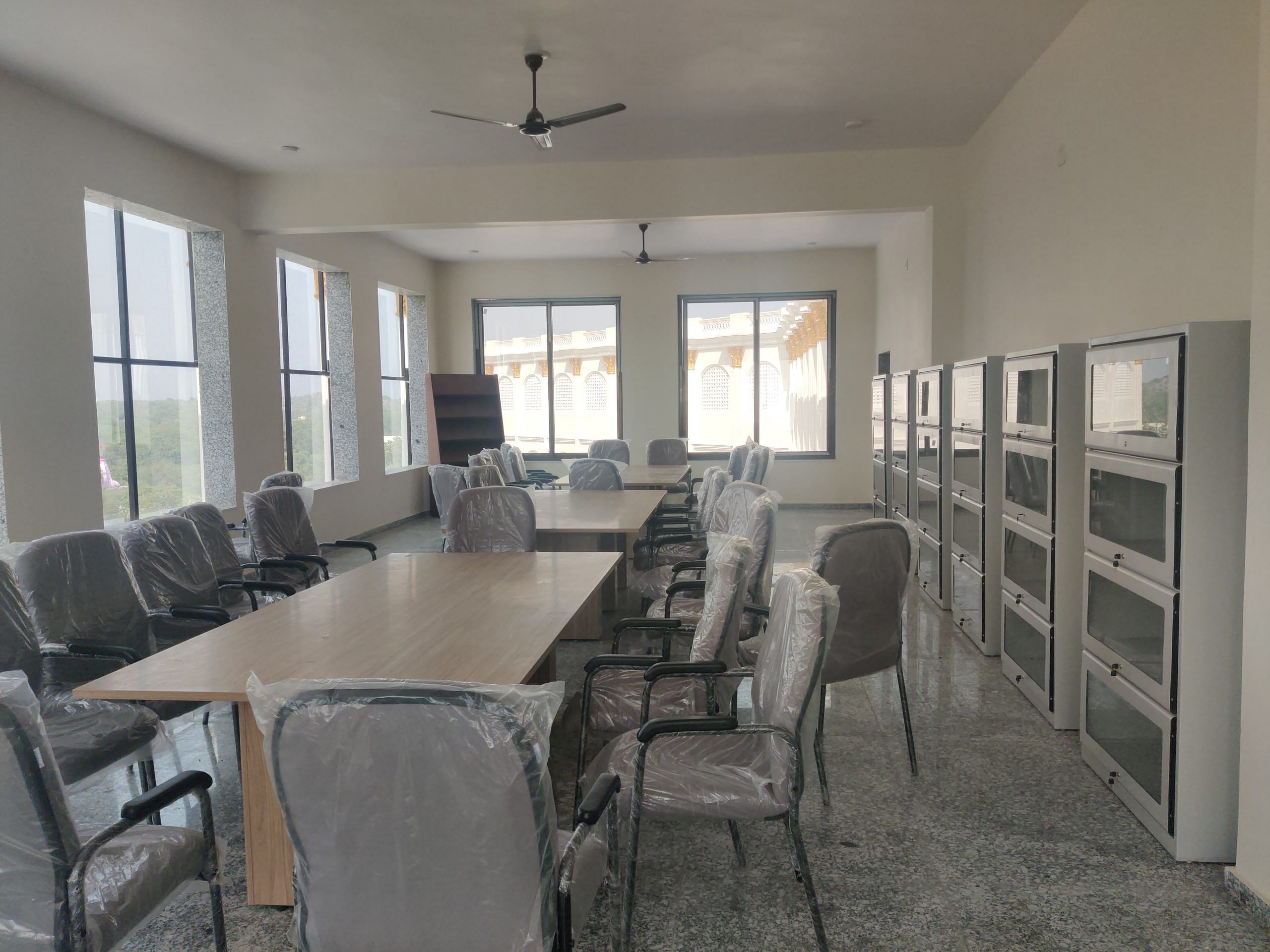
“If schools or colleges like this had existed in our time, maybe I would’ve become a teacher too. But now, all I want is for my daughter to make something of herself—to earn, to stand on her own, to live a life she chooses. I’ll live my dream through hers,” she said, asking not to be named.
If schools like this had existed in our time, maybe I would’ve become a teacher too — Isha Parman’s mother
Back at school, Class 10 student Pooja Chadana, 14, lights up when she talks about her favourite subject: beauty and wellness, now offered under home science.
“I love learning makeup,” she said. “I want to become an air hostess. This new school makes me feel like maybe it’s actually possible.”
The new school has become a gateway to a life beyond the village, where most people are either farmers or daily wage labourers.
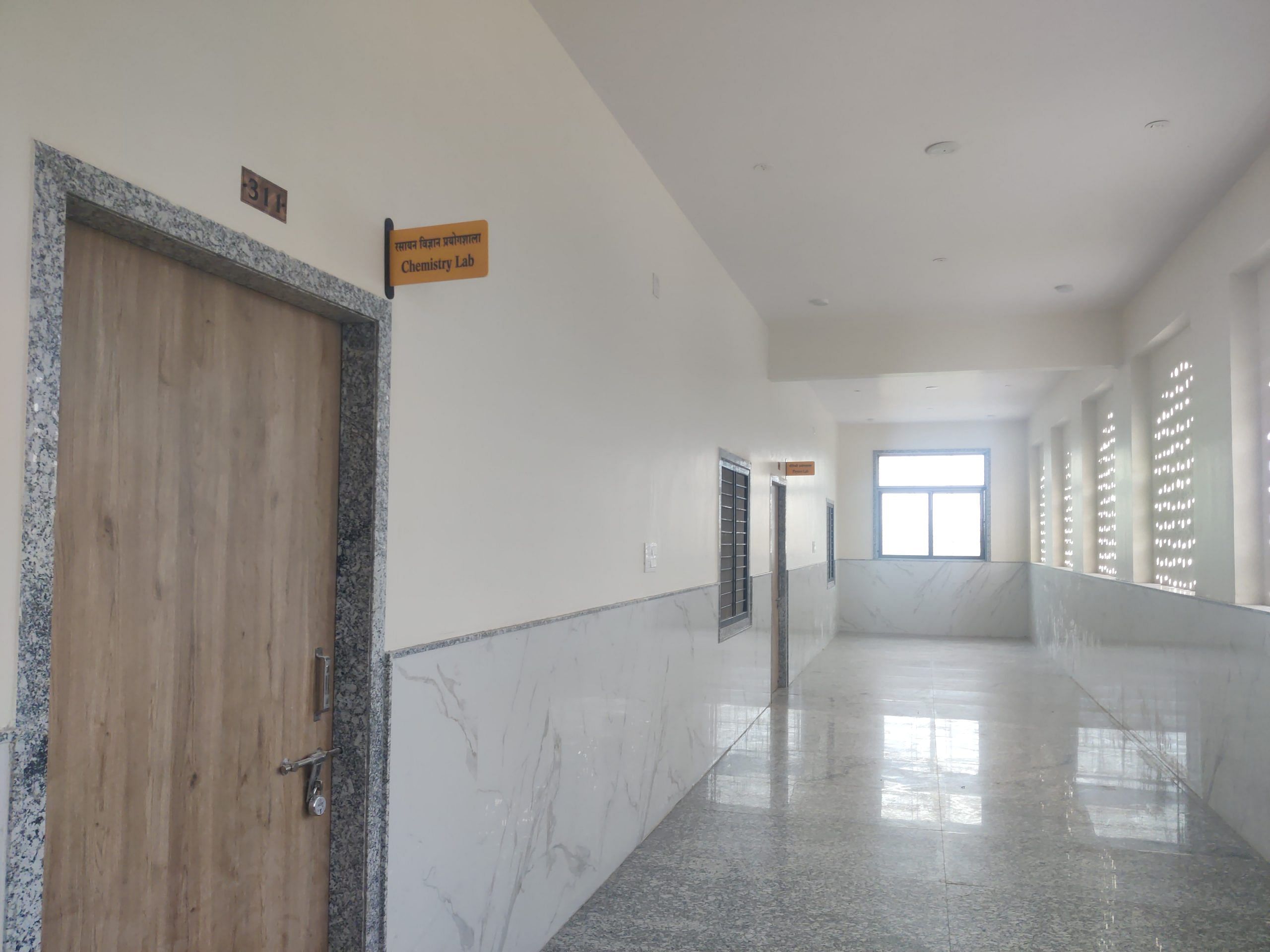
Many of the village’s young men migrate to cities like Mumbai, Ahmedabad, and Surat, often finding work in the jewellery industry or on construction sites. Back in the village, it’s mostly women, children, and the elderly who remain, engaged in household chores and agricultural work.
But beneath her hope lies a quiet worry. For most girls in Shishoda Kalan, higher education ends where distance begins. The nearest college is over 15 km away in Nathdwara, a stretch too far for fearful parents. In most cases, girls are forced into early marriage soon after finishing Class 12, their dreams shelved before they ever take flight.
This new school makes me feel like maybe it’s actually possible — Pooja, a Class 10 student
Reena Chadana, fresh out of Class 12, finds herself in a quiet pause — her dreams waiting, her future hanging on her parents’ decision. A college in Shishoda would change everything, not just for her but for the entire village, where most people are either farmers or daily wage labourers.
Most young men migrate to cities like Mumbai, Ahmedabad, and Surat to work in the jewellery industry or on construction sites, leaving behind women, children, and the elderly.
Also read: ‘World’s largest indigenous school’ in Odisha is a jail. ‘We’re all monkeys,’ says tribal student
Robots, 3D printers, and hope
During a five-day summer camp from 1-5 June, students learned to build drones, robots, light circuits, and even 3D printers.
“Sir, look I’m flying it,” shouted a 10-year-old boy, racing down the white corridors while manoeuvring a drone overhead. In another room, students crowded around a robot they had built. A 3D printer buzzed in the background as a group of girls added lights to a tree-shaped structure they had printed, turning it into a decorative piece for the home.
Even the adults–village elders, teachers and parents–stood wide-eyed in wonder.
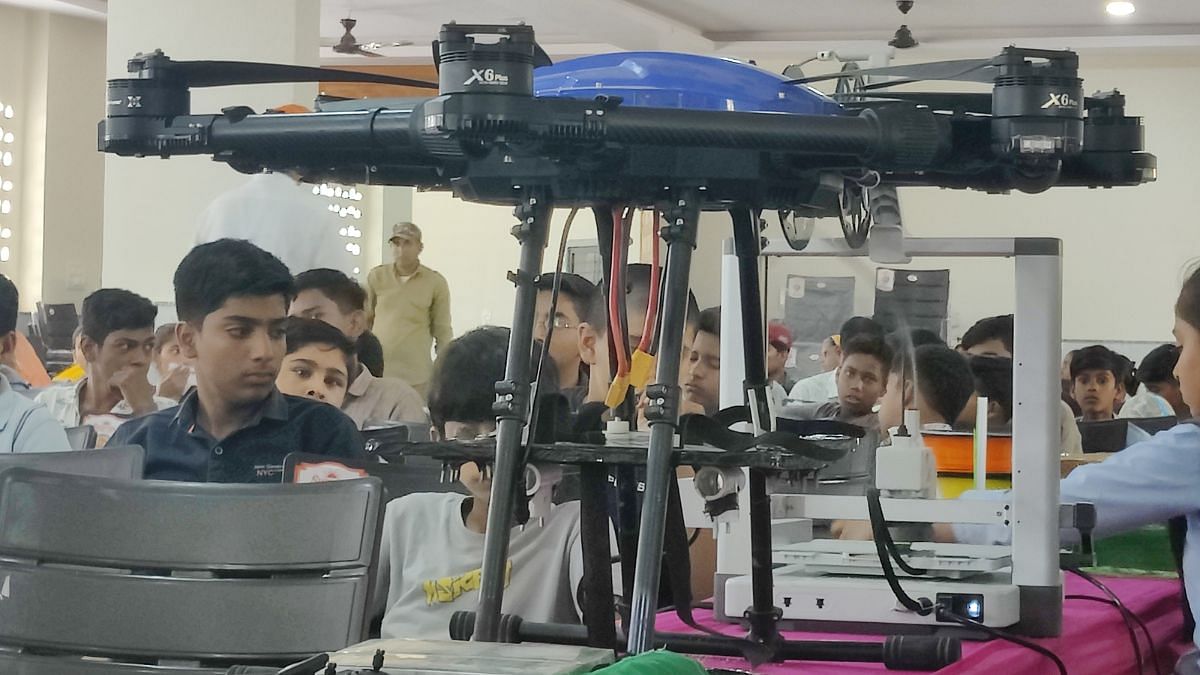
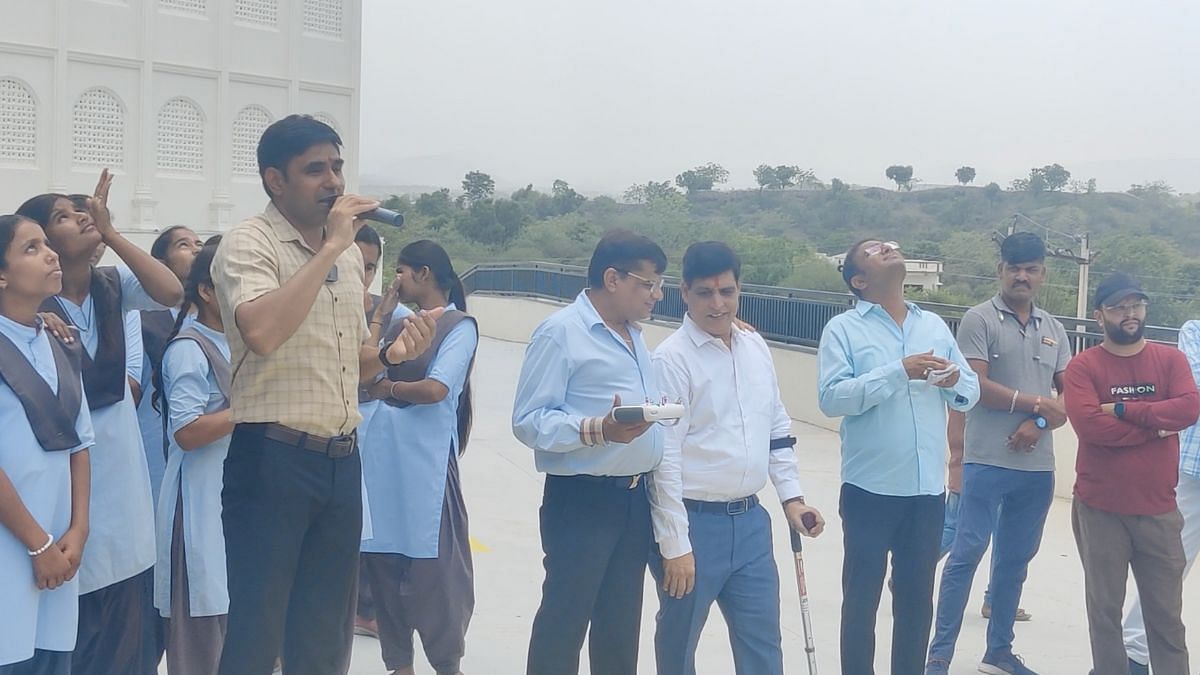
Leeladhar Joshi, a mathematics teacher at the school for the past six years, recalled a time when there were just 12 rooms, no regular staff, and zero infrastructure for skill development.
“In today’s world, even a six-month-old plays with a robot. So why shouldn’t our kids learn drone tech, AI, robotics, painting, music? This summer camp proved what’s possible,” Joshi said.
Expert instructors from Jaipur conducted the camp. Students from nearby government schools also joined, eager to participate in what felt more like a tech fair than a village workshop. The excitement has sparked so much demand that parents now worry whether their children will even get a seat as the school’s reputation continues to grow.
Even a six-month-old plays with a robot. So why shouldn’t our kids learn drone tech and AI? — Leeladhar Joshi, teacher
This fervour has spread to other schools too. The principal of a government school in another village encouraged his students with a bold example: Ukraine’s homegrown drones that have struck deep into Russian territory.
“If they can build drones for their country, why can’t we?” said Lokesh Kumar Palliwal, addressing students during the camp’s final day. “We must become self-reliant. You all have a role to play in shaping our nation’s future.”
Diamond rings, velvet sofas, and village’s pride
While the transformation in Shishoda has drawn admiration, Meghraj himself is a larger-than-life figure. Children touch his feet; elders greet him with nods of respect. A large diamond ring glints on his finger, a thick gold chain rests around his neck. As he sinks into the sofa of his mansion, he holds forth on his vision for the village.
His face now adorns posters of the school’s inauguration, displayed on many homes.
Though Mumbai is his base, whenever he visits Shishoda, he lives in his mansion—the only one in the village. Its manicured garden, rooms with gleaming chandeliers, and oversized velvet sofas seem more suited to a luxury hotel. A personal cook stands ready in his sprawling kitchen. A long, polished dining table dominates the room. Posters of Jain monks hang alongside expensive artwork.
Maybe God didn’t make me a scholar—but he made me a leader — Meghraj Jain
Meghraj makes it a point to stay informed about what’s happening not just in Shishoda but in neighbouring villages too. On 29 July 2024, four men from a nearby village died in a construction accident. One of the victims had three children, two of whom were visually impaired. His wife had no source of income.
When Meghraj heard about it, he drove from Shishoda to meet the grieving family. He gave them Rs 5 lakh, made a Rs 10 lakh fixed deposit for the daughter, and lobbied the government for compensation.
“Meghraj ji helped us a lot. He arranged admission for our son at one of the boarding schools in Udaipur for underprivileged children,” said the victim’s wife, Sundar Meghwal.
Meghraj grew up in a small house like everyone else in the village. His family, like many others, had migrated to Mumbai. His father already had a one-room jewellery shop there. Meghraj and his brother took over and expanded it into the sprawling Mangal Group—a multi-industry company dealing in jewellery, gold, personal loans, mortgages, construction, IT server sales, entertainment, makeup, and their own brands of water bottles and bulbs.
All this is new to Meghraj, who dropped out of school to join the family business.
“I didn’t study as much as I should have,” he said. “But today, I lead teams of CAs, MBAs, and IT professionals. Maybe God didn’t make me a scholar–but he made me a leader. I still think like a man from a small village. But now, instead of wondering how to earn Rs 5,000, I think about how to turn Rs 5,000 into Rs 50,000.”
(Edited by Prashant)



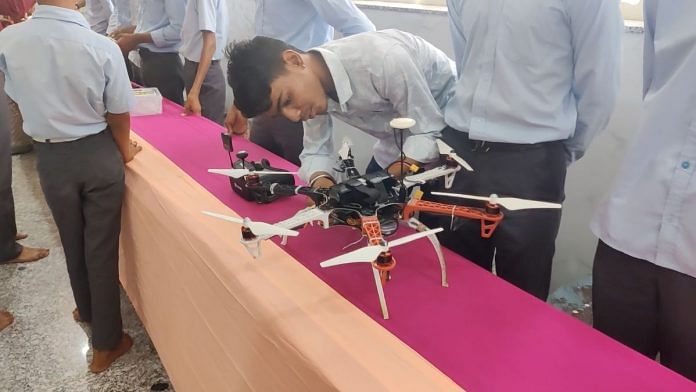



This surely is a paid article.
This clown, Meghraj, wants a Padma Shri for building a five star school in some God forsaken village
is this a paid article ? reads like one.